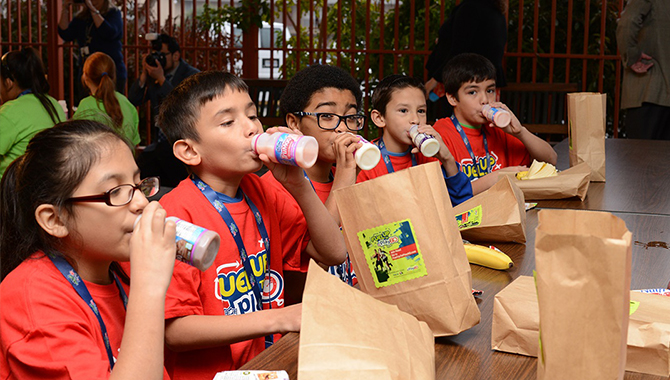As an adult, if I miss breakfast, I experience a headache – and as a mom of two boys, I know how important it is for students to start the school day with a healthy breakfast. In fact, a new study has revealed the impact of one particular school breakfast program.
A Proven Better Beginning
Stats have shown that school breakfast significantly improves students’ cognitive abilities and nutrient intake:
- Low-income children who eat school breakfast perform better on a variety of indicators than those who don’t eat it
- School breakfast eaters have better educational readiness, including attendance, energy, alertness and memory
- School breakfast eaters have better educational outcomes, including math scores, grades and reading ability
- Students who eat school breakfast consume more milk, which provides nine essential nutrients including calcium, potassium and vitamin D ‒ three of the four key nutrients of concern outlined in the 2010 Dietary Guidelines
But how do we ensure that every student has access to a nutritious breakfast?
Finding the Right Breakfast Program Has Been Challenging
While many students qualify for the federal school meal program, the program is underutilized; out of every 100 kids who participate in free lunch, only 50 participate in free breakfast.
Universal free school breakfast is one way to increase participation; every student has access to a free breakfast regardless of income status. Another is to take breakfast out of the cafeteria and into the classroom. Breakfast in the Classroom (BIC) is “room service” that allows the students and teacher to eat together in their classroom after the beginning of the school day. One kindergartner said what he liked most about BIC was that “We get to eat family-style.”
But what effect does it have on our students? Are we really getting them the nutrients they need?
A Study on Breakfast in the Classroom
A new study confirms that universal free BIC helps increase participation in school breakfast as well as the intake of essential milk nutrients.
Nolen and Krey studied the nutrient intake of more than 450 third-through-fifth-graders at five elementary schools in a large Texas school district over two academic years. Two schools implemented BIC and three continued the traditional cafeteria school breakfast program. Researchers compared the amount and type of milk consumed by students as well as the nutrient intakes by type of milk consumed.
Key findings included:
- BIC students were twice as likely to eat breakfast as non-BIC students
- BIC students were more likely to drink milk
- BIC students had significantly higher intake of four key nutrients: calcium and vitamins A, B12 and D (calcium and vitamin D are both nutrients of concern)
- Flavored-milk drinkers had significantly higher intake of vitamin D (a nutrient of concern)
These findings support the role of breakfast in the classroom and milk for students to start their day with a nutrient-rich breakfast. The study also supports the role of flavored milk like chocolate as an option that students are more likely to drink. Flavored milk only contributes about 3 percent of the added sugar in children’s diets, yet provides a significant portion of essential nutrients. I feel good about serving my boys vanilla milk any time of the day!
Learn more about breakfast and student performance.




